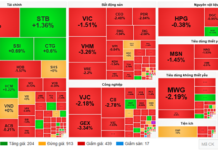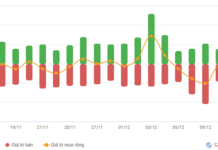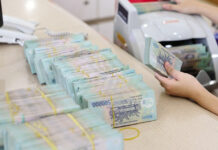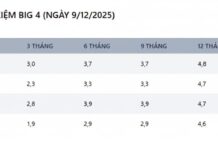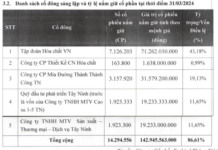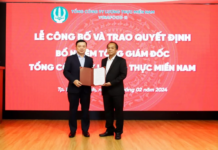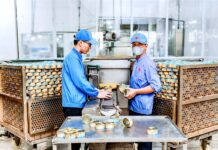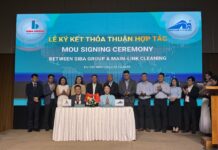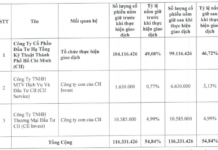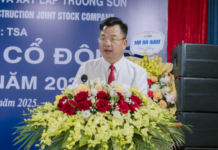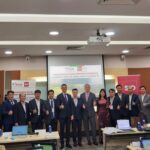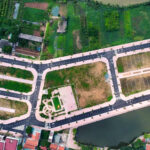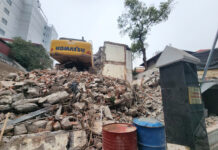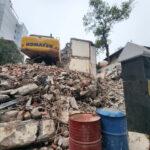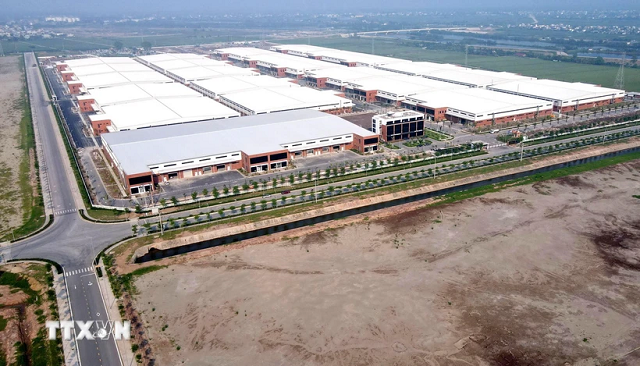
Lien Ha Thai Industrial Park adopts green and clean technology. (Photo: The World/VNA)
|
To achieve the net-zero emission goal by 2050, as committed at COP26, the transition from traditional industrial parks to eco-industrial parks is not only an inevitable trend but also a mandatory requirement.
Eco-industrial parks offer a promising vision for the future, where economic prosperity goes hand in hand with environmental sustainability.
According to the Department of Management of Economic Zones, Ministry of Planning and Investment, as of July 2024, there were 431 industrial parks and export processing zones established in Vietnam, covering a total area of approximately 132,300 hectares, providing about 89,900 hectares of industrial land. Of these, 301 industrial parks are already operational and have attracted significant investment from domestic and foreign enterprises.
Statistics show that foreign direct investment (FDI) in industrial parks and economic zones in recent years accounts for about 35-40% of the country’s total registered FDI. If we look specifically at the manufacturing sector, FDI in industrial parks and economic zones makes up 70-80% of the country’s total registered investment in this field.
With the resources attracted, industrial parks and economic zones have contributed to accelerating Vietnam’s industrialization, modernization, economic restructuring, and integration into the global economy. They have also made important contributions to the state budget, job creation, and social welfare.
However, the development of industrial parks and economic zones in recent times has revealed several shortcomings, especially regarding environmental protection and sustainable development.
According to Ms. Vuong Thi Minh Hieu, Deputy Director of the Department of Management of Economic Zones, Ministry of Planning and Investment, the rapid development of industrial parks has put tremendous pressure on the environment and the livelihoods of local residents.
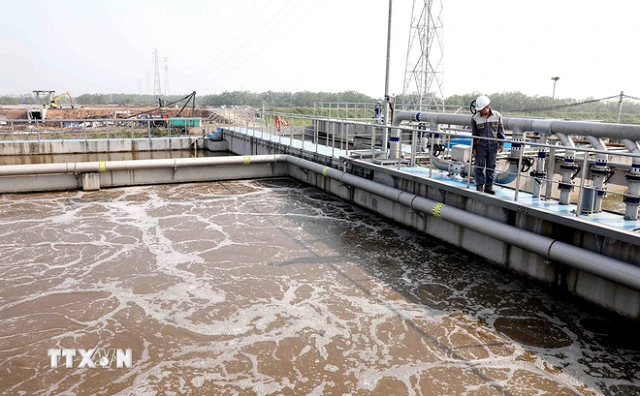 Centralized wastewater treatment plant of Lien Ha Thai Industrial Park. (Photo: The World/VNA)
|
About 13% of operating industrial parks have not built wastewater treatment plants, posing threats to the health and lives of people living nearby, as well as causing water and air pollution and an increase in hazardous waste.
In addition, the intensification of industrial production activities and the expansion of industrial park systems in Vietnam pose risks of ecological environmental pollution. In some industrial parks, the provision of services is still inadequate or of low quality, and social welfare is not always guaranteed.
Ms. Hieu attributed these issues to the traditional approach of industrial parks, which often prioritize maximizing profits and economic growth without giving due attention to environmental protection or social welfare.
Moreover, infrastructure investors in industrial parks often face financial difficulties, leading to a phased development approach. In contrast, investing in a synchronized system of functional subdivisions, wastewater treatment, and water and electricity infrastructure requires substantial capital investment from the outset.
Additionally, domestic and international policies related to green growth and circular economy have directly influenced the orientation of industrial park development in Vietnam, demanding higher-quality development that emphasizes sustainability, depth, high technology, and innovative models, along with regional linkages.
According to Ms. Vuong Thi Minh Hieu, sustainable development is no longer just a slogan but is becoming an inevitable trend and a core value for businesses, helping them define their vision and strategic direction.
Many localities and infrastructure investors in industrial parks recognize the urgent need to develop eco-industrial parks to create sustainable competitive advantages.
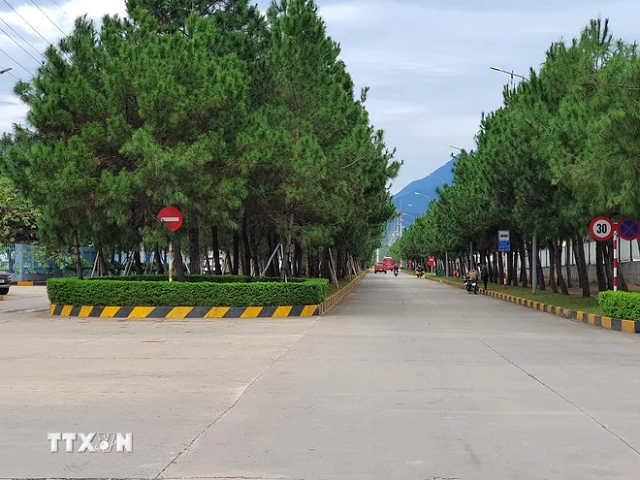
Ba Thien Industrial Park, located in Binh Xuyen district, Vinh Phuc province, boasts a green, clean, and beautiful landscape. (Photo: Nguyen Trong Lich/VNA)
|
Furthermore, the development of eco-industrial parks and green industrial parks is imperative to meet the demands of green consumption and to fulfill the commitments made at COP26 to achieve net-zero emissions by 2050.
The government aims that by 2030, approximately 40-50% of localities will transform existing industrial parks into eco-industrial parks, and 8-10% of localities will incorporate the concept of eco-industrial parks in their planning, construction, and investment attraction strategies.
Mr. Bui Quoc Khanh, General Director of TNTech Joint Stock Company, shared that the Fourth Industrial Revolution has ushered in new development trends, and Vietnam can seize this opportunity to expedite the greening of industrial parks.
The Department of Management of Economic Zones, Ministry of Planning and Investment, informed that based on the positive results of eco-industrial park models in Vietnam, the Swiss Government has committed to continuing its collaboration with the United Nations Industrial Development Organization (UNIDO) to support Vietnam in promoting eco-industrial parks in conjunction with the circular economy during 2024-2028.
In August 2024, the Minister of Planning and Investment approved the “Replication of the Eco-Industrial Park Approach to Promote the Circular Economy in Vietnam” project document, with a total funding of 3.6 million USD from the Swiss Federal Department of Economic Affairs. This project will further promote eco-industrial parks in Hai Phong, Bac Ninh, Dong Nai, Ho Chi Minh City, and Long An.
Additionally, under cooperation frameworks with other international organizations, the Ministry of Planning and Investment is working with the World Bank to support the development of an eco-industrial park in Binh Duong province. They are also implementing water recycling networks for industrial parks with a high concentration of textile activities in Hung Yen and Thua Thien-Hue provinces and promoting energy efficiency in industrial parks to build eco-industrial parks following the Korean model.
However, in reality, the “greening” process of industrial parks faces numerous challenges, ranging from financial constraints to the capacity of investors and unclear legal regulations.
According to Mr. Bruno Jaspaert, Executive Director of Deep C Industrial Zones, the most significant challenge Vietnam currently faces is the lack of legal regulations that align with the practical development needs. Consequently, establishing a green and eco-industrial park will be a time-consuming and arduous task.
“At present, Vietnam does not have any preferential policies specifically for eco-industrial parks, even though the investment costs, time, and effort required for these parks are higher and longer. Without a favorable symbiotic mechanism, it will be challenging to implement and develop the circular economy,” said Mr. Bruno Jaspaert.
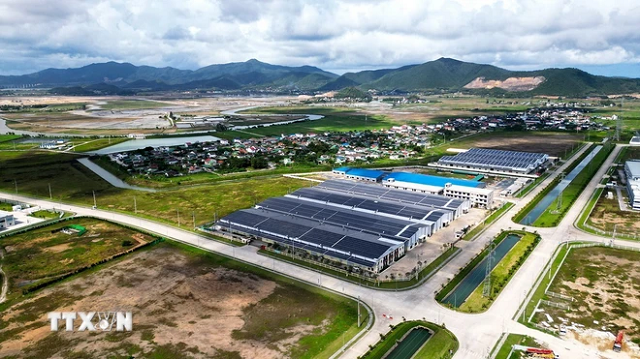 The eco-industrial park model overcomes environmental limitations and contributes significantly to climate change adaptation (WHA Industrial Park 1, Nghi Loc district, Nghe An province). (Photo: Tuan Anh/VNA)
|
According to the leadership of the Department of Management of Economic Zones, to realize the goal of sustainable development, industrial parks need to adopt breakthrough solutions that align with new trends.
“Researching and formulating a Law on Industrial Parks and Economic Zones to enhance the international competitiveness of these models is one of the key tasks that the Ministry of Planning and Investment will undertake in collaboration with relevant ministries, sectors, and localities in the coming time,” emphasized Ms. Hieu.
Additionally, industrial parks should boldly pioneer a change in their development direction, focusing on promoting eco-industrial parks and green industrial parks.
Science and technology, along with innovation, should be the pillars for future development. Investment attraction should be selective, proactively engaging with leading global corporations in priority sectors and fields.
Thuy Hien
“CapitaLand Development Launches ‘Steps of Love’ Campaign in Hanoi”
On August 27, 2024, CapitaLand Development (CLD) proudly launched its second annual “Steps of Love” campaign in Hanoi, in collaboration with the CapitaLand Hope Foundation (CHF) and Blue Dragon Children’s Organization. This initiative aims to unite the community in supporting underprivileged children and youth in Vietnam.
The Green Business Award: PNJ’s Consecutive Wins
PNJ has once again proven its mettle by being awarded the “Ho Chi Minh City Green Enterprise 2024” title by the People’s Committee of Ho Chi Minh City. This prestigious recognition is a testament to PNJ’s commitment to sustainability and social responsibility, setting them apart from hundreds of other businesses in the trade and service industry.
The Art of Relaxation: Onsen Fuji Group and MSH Group Join Forces to Create the Ultimate Retreat Experience
On August 28, the Onsen Fuji Group inked a strategic partnership with MSH Group to develop the Tokyu Retreat project. This milestone event marks a pivotal step towards transforming Tokyu Retreat into a new icon in the real estate market.
The Art of Governance and Leadership: VIETSTAR – SID’s Two-Year Triumph
In the midst of global integration, Vietnamese enterprises are presented with unprecedented opportunities and challenges. As they navigate this complex landscape, it is imperative that they adapt and evolve to stay competitive. The ability to recognize and capitalize on these opportunities will be pivotal, setting the stage for long-term success and sustainability in a dynamic market.


